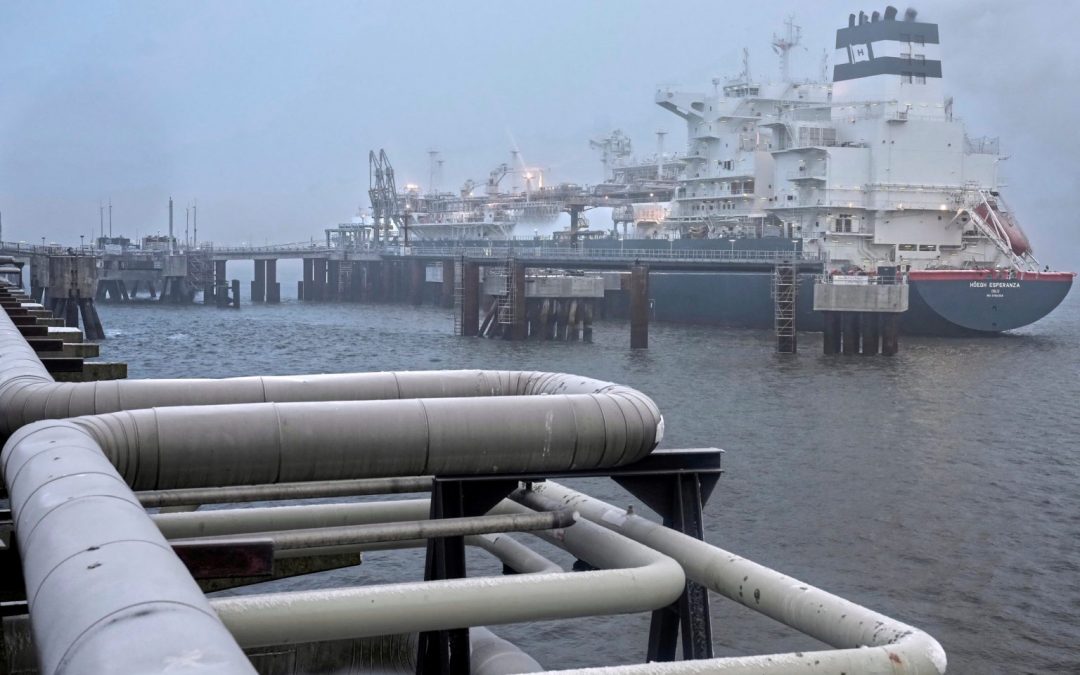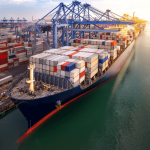While the bio-LNG bunkering market is still in its infancy, companies have been closely eyeing the market as a means of meeting emissions targets and bolstering LNG’s future as a marine fuel, particularly following Hapag-Lloyd’s watershed tender for the supply of biomethane in 2025-2026.
The deal will see Hapag-Lloyd deploy its ships on the Singapore-Rotterdam route and refuel with biomethane produced from manure, fed through the European gas grid on a mass balance basis compliant with the EU’s Renewable Energy Directive.
Sources in the industry estimated that the tender could amount to around 250,000 mt of bio-LNG being bunkered. “This [tender] is for a significant volume and shows the market is growing,” a source said.
The announcement came after Hapag-Lloyd said it could consume 300,000 mt/year of biomethane to fully decarbonize its 13 LNG-capable ships, all of which are scheduled to be delivered by the end of 2025.
High prices
Despite the market’s optimism about bio-LNG’s prospects as a shipping fuel, the industry will need to see the price of the fuel come down for it to be viewed as a viable alternative.
Traders said bio-LNG prices vary depending on the feedstock and Green-House-Gas savings. Bio-LNG with 89% savings can trade around EUR70/MWh, while savings of around 200% can trade upwards of EUR200/MWh.
When converted to consider calorific values, this equates to around $21.03/Gj for bio-LNG with 89% GHG savings or around $60.085/Gj with 200% savings. By comparison, Platts assessed LNG bunker fuel Rotterdam at $11.901/Gj on June 3 and 0.5% Marine Fuel Rotterdam at $14.268/Gj.
“Shipowners don’t want to pay the high prices yet,” a source said.
At current prices, the shipping industry is more likely to pay the penalties of non-compliance with regulations rather than pay for bio-LNG fuel, another source added.
However, some market players anticipate shifting this dynamic as emission regulations become stricter.
For example, the EU’s Emission Trading Scheme (ETS) currently stipulates that 40% of shipping companies’ emissions must be covered by allowances for emissions reported in 2024. This increases to 70% in 2025 and 100% from 2027 and beyond.
“Bio-LNG is very nascent, especially as the prices are high, but conventional fuels will become more expensive because of the allowances under ETS, then it will become more viable,” another source added.
Further, producing biomethane in large-scale plants will also drive down the cost. Industry coalition group SEA-LNG forecasts that the average cost of delivered bio-LNG will decline by 30% to approximately $20/Gj by 2050.
The European Biogas Association (EBA) reported that there are a total of 1,322 biomethane-producing facilities in Europe as of April 2023, a 30% increase from 2021. Over 75% of the current plants are connected to transport or distribution grids.
“Bio-LNG is among the most cost-effective alternative marine fuels, cheaper than biomethanol and electrofuel, including e-ammonia and e-methanol,” the group said in a report.
Infrastructure
Bio-LNG is also uniquely positioned to help the maritime industry meet emission reduction goals in that it can be supplied using existing LNG infrastructure, and LNG engines can generally accommodate the fuel without major modifications.
“In the alternative fuels space, bio-LNG is best placed,” a source said.
According to industry coalition group SEA-LNG, there are around 58 LNG bunkering locations in Northwest Europe, which can easily add bio-LNG as part of its offerings.
With bio-LNG supply set to increase and regulations supporting the use of biofuels in the maritime sector, market participants are optimistic that the Hapag-Lloyd deal will be the first of many for bio-LNG bunkering.
Source: S&P Global





